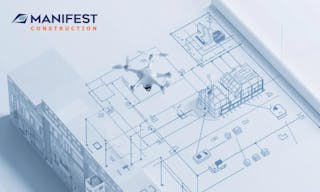
Digital Technologies in Construction – BIM, Drones and Project Management Software
Smart construction is no longer a vision; it is standard practice on competitive sites. Building Information Modeling (BIM), reality capture with drones and laser scanning, and cloud-based project management platforms are redefining how projects are planned, executed and handed over. The immediate gains are fewer errors, tighter schedules and clearer accountability. The deeper value is a single digital thread that carries verified information from design to site to operations, where the asset can deliver measurable performance.

BIM functions as the project’s common data environment. Instead of fragmented drawings, architects, engineers and site teams collaborate on one living model, so clashes are resolved before they hit the ground. As schedules and budgets are linked to geometry in 4D and 5D, the impact of any change becomes visible in hours, not weeks, which de-risks decisions and reduces rework. Material attributes, quantities and carbon data travel with each object, enabling better choices on cost, durability and embodied impact. This is where digital truly outperforms paper: everyone reads from the same source of truth.
Out in the field, drones and photogrammetry convert progress into objective data. Weekly as-built point clouds are compared to the BIM model to spot deviations early—misaligned embeds, incomplete reinforcement, tolerance issues—so corrective action is surgical rather than sweeping. Remote inspection improves safety in hard-to-reach areas and frees supervisors to focus on high-value tasks. When QR or barcodes on materials and components are tied to the model, receiving, warranties and quality checks become traceable in seconds, shrinking the “where is it?” time that silently kills productivity.
Modern project management software ties the whole operation together. RFIs, submittals, site diaries, punch lists, procurement and cost control sit in a single cloud workspace, with real-time updates from subcontractors and digital approvals that leave a clear audit trail. Dashboards surface risk early—critical path slippage, procurement bottlenecks, safety hot spots—so the team can respond before issues escalate. This removes information silos, speeds decisions and keeps everyone aligned to scope, schedule and budget.
Quality and safety improve when they are embedded in the daily routine rather than treated as afterthoughts. Standardised HSE and QA/QC checklists with geo-tagged photos create transparency and a culture of continuous learning. Analytics highlight recurring errors by trade or work phase, so training and supervision target the real gaps. Claims go down, trust goes up and the overall cost of poor quality shrinks. Crucially, these same datasets make client reporting simpler and strengthen compliance with ISO 45001 and other standards without adding admin overhead.
Digital delivery also supports sustainability goals without complicating life on site. When material take-offs are driven by the model and reconciled with actual deliveries, waste drops. Commissioning results, airtightness tests and thermal imaging can be stored alongside model elements, proving performance at handover. This evidence is increasingly requested by investors and lenders because it links construction choices to long-term outcomes such as Energy Efficiency and operating costs. In other words, the construction team sets the asset up for success well beyond practical completion.
Handover itself changes character in a digital project. Instead of a static folder of PDFs, the client receives a living dataset—a verified model, structured documentation and linked asset information—that can flow into maintenance systems or a lightweight digital twin. At that point there is a natural bridge to Facility Management and Facilities Management, where service teams will run the building day to day. With clean data from construction, they can plan preventive maintenance, order the right spares and tune systems for performance rather than guesswork. For owners who use integrated facility services, this continuity is what turns a one-off project into an asset that performs predictably over its life.
The business case is clear. Projects that combine BIM, reality capture and cloud PM reduce risk, compress timelines and hand over assets that are easier and cheaper to operate. Teams spend less time searching for information and more time building. Clients see what is happening in near real time and gain confidence that decisions are based on facts. And when the building goes live, the same digital thread supports optimisation and saving opportunities that compound over years. Digital technologies in construction are not a trend; they are the operating system for better projects—delivered faster, with fewer surprises and ready for high-performance operation from day one.